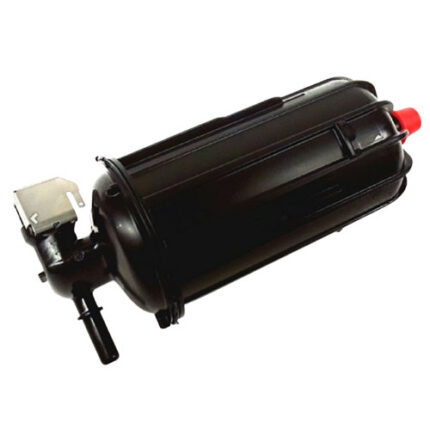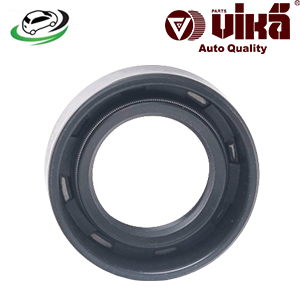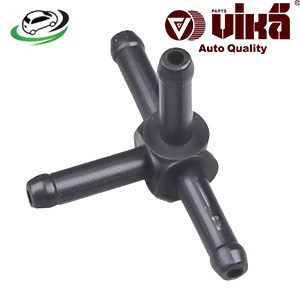-20%
Get Coolant Water Hose Outlet Connectors AUDI S3 04-2008/ AUDI A3 04-2008/ VW VW Bora 99-2005/ VW Golf 2.0L/ VW Jetta 2.0L/ VW Polo 07-2015 6Q0121619
Coolant water hose outlet connectors are vital components in a vehicle’s cooling system, facilitating the flow of coolant between various parts of the engine and radiator. They play a crucial role in maintaining engine temperature, ensuring efficient cooling, and preventing overheating. Understanding their design, function, benefits, common issues, and maintenance requirements is essential for the effective operation of a vehicle’s cooling system.
Function and Importance
- Coolant Flow Management: The primary function of coolant water hose outlet connectors is to link the various hoses that carry coolant to and from the engine and radiator. These connectors ensure that coolant flows efficiently through the system, helping to maintain the engine at an optimal operating temperature.
- System Integration: Coolant outlet connectors integrate different parts of the cooling system, such as the radiator, engine block, and thermostat housing. They provide a secure and leak-proof connection, ensuring that coolant circulates properly throughout the engine and cooling system.
- Temperature Regulation: By facilitating the movement of coolant, these connectors help regulate engine temperature. Proper coolant flow is crucial for preventing overheating, which can lead to engine damage, reduced performance, and increased maintenance costs.
- Engine Protection: Effective coolant circulation helps protect the engine from heat-related damage. Overheating can cause severe issues, including warped cylinder heads, damaged gaskets, and reduced engine life. The connectors play a crucial role in preventing such problems.
Design and Construction
- Materials:
- Plastic: Many coolant outlet connectors are made from high-strength plastic. This material is lightweight, resistant to corrosion, and capable of withstanding high temperatures and pressure.
- Metal: Some connectors are constructed from metals such as aluminum or stainless steel. Metal connectors are known for their durability and resistance to extreme temperatures and mechanical stress.
- Rubber Seals: Rubber seals or gaskets are often used in conjunction with the connectors to ensure a tight, leak-proof seal between the connector and the hose or engine component.
- Design:
- Connector Shapes: Coolant water hose outlet connectors come in various shapes and sizes, depending on their specific application. Common designs include straight connectors, elbows, and tees, which allow for different routing of coolant hoses.
- Barbs and Fittings: Many connectors feature barbed ends or threaded fittings to secure the hoses and prevent leaks. Barbs provide a snug fit for the hose, while threaded fittings allow for a more secure connection.
- Types:
- Standard Connectors: These are commonly used in most vehicles and are designed for typical cooling system configurations. They provide reliable connections for coolant hoses.
- Performance Connectors: High-performance or aftermarket vehicles may use specialized connectors designed to handle higher pressures and temperatures. These connectors are often made from advanced materials and may feature enhanced sealing mechanisms.
Benefits
- Efficient Coolant Flow: Properly functioning coolant water hose outlet connectors ensure that coolant flows smoothly between the engine and radiator, which is essential for effective temperature regulation and engine performance.
- Leak Prevention: High-quality connectors provide a secure, leak-proof connection between hoses and engine components. This prevents coolant loss, which can lead to overheating and engine damage.
- Durability: Connectors made from durable materials such as plastic or metal are designed to withstand the stresses of high temperatures and pressures in the cooling system. This contributes to their longevity and reliability.
- Ease of Maintenance: Well-designed connectors facilitate easy removal and replacement of coolant hoses, making routine maintenance and repairs more straightforward. This helps ensure that the cooling system remains in good working order.
- System Integrity: By providing secure connections, coolant water hose outlet connectors help maintain the overall integrity of the cooling system. This prevents issues such as coolant leaks, hose disconnections, and cooling system failures.
Common Issues
- Leaks:
- Connector Cracks: Over time, coolant outlet connectors can develop cracks or fractures due to thermal cycling or mechanical stress. Cracks can lead to coolant leaks, reducing system effectiveness and causing overheating.
- Loose Connections: Improperly tightened or secured connectors can lead to leaks at the connection points. This can occur if the connectors are not installed correctly or if the hose clamps are not properly tightened.
- Corrosion:
- Material Degradation: Plastic and metal connectors can corrode or degrade over time due to exposure to coolant chemicals and high temperatures. Corrosion can weaken the connectors and lead to leaks or failures.
- Gasket Failure: Rubber seals or gaskets used with connectors can deteriorate due to heat and chemical exposure. This can result in leaks and compromised sealing.
- Clogging:
- Debris Build-Up: Dirt, rust, or debris can accumulate in the connectors, potentially restricting coolant flow. This can lead to overheating or reduced cooling efficiency.
- Connector Damage:
- Physical Impact: Connectors can be damaged by physical impacts, such as road debris or improper handling during maintenance. Damage can lead to leaks or disconnections.
Maintenance and Inspection
- Regular Inspections:
- Visual Check: Periodically inspect coolant water hose outlet connectors for signs of wear, damage, or leaks. Look for cracks, corrosion, or coolant stains around the connectors.
- Hose Condition: Check the condition of the coolant hoses connected to the connectors. Ensure that they are not cracked, swollen, or otherwise damaged.
- Leak Detection:
- Coolant Level: Monitor the coolant level in the radiator and coolant reservoir. A drop in coolant level may indicate a leak in the connectors or other parts of the cooling system.
- Pressure Testing: Perform a cooling system pressure test to identify any leaks or weaknesses in the connectors and other components.
- Replacement:
- Timely Replacement: Replace coolant water hose outlet connectors if they show signs of damage, corrosion, or leakage. Addressing these issues promptly can prevent overheating and engine damage.
- Quality Parts: Use high-quality replacement connectors that match the specifications of your vehicle to ensure proper fit and performance.
- Professional Assistance:
- Mechanic’s Inspection: If you are unsure about the condition of the connectors or experience cooling system issues, seek professional assistance. A mechanic can perform a thorough inspection and recommend any necessary repairs or replacements.
Replacement Process
- Locate the Connectors:
- Find the Connectors: Identify the coolant water hose outlet connectors, which are typically located at the engine and radiator connection points. They may be part of the hose assembly or integrated into the engine components.
- Remove the Old Connectors:
- Disconnect Hoses: Carefully disconnect the coolant hoses from the old connectors. Be cautious of coolant spills and follow safety procedures.
- Remove the Connectors: Remove the old connectors by loosening any clamps or fittings. If the connectors are threaded, use the appropriate tools to unscrew them.
- Install the New Connectors:
- Position the Connectors: Place the new connectors onto the engine or radiator, ensuring proper alignment and fit.
- Secure with Clamps: Reattach the coolant hoses and secure them with hose clamps. Tighten the clamps to ensure a snug fit and prevent leaks.
- Verify Operation:
- Check for Leaks: Start the engine and allow it to reach operating temperature. Inspect the connectors and connection points for any signs of leaks or coolant seepage.
- Monitor Performance: Ensure that the cooling system is functioning correctly and that the engine maintains a stable temperature.
Follow us on Facebook for more parts.



